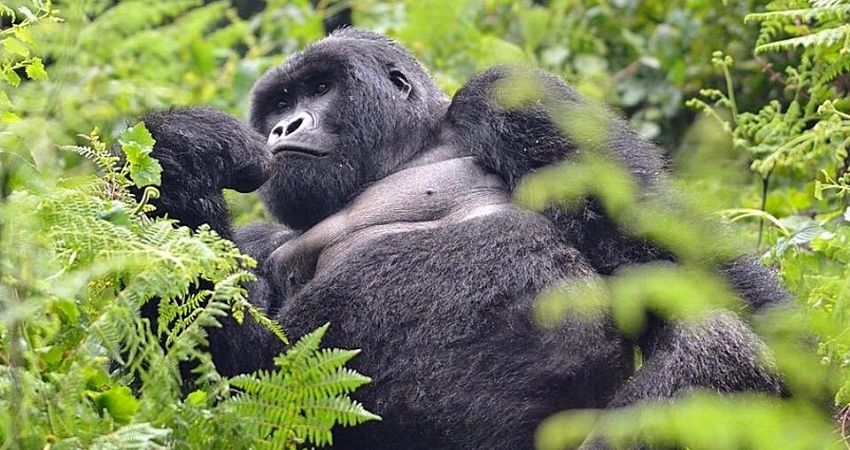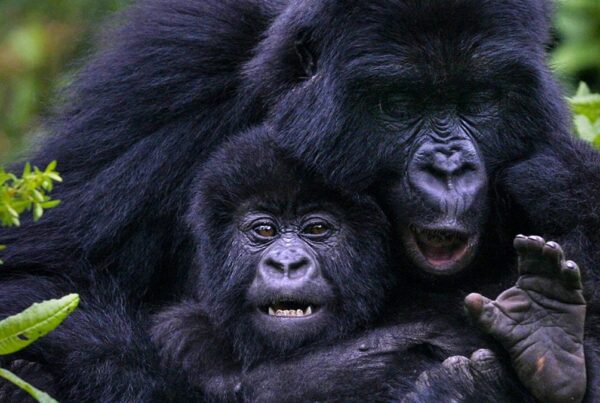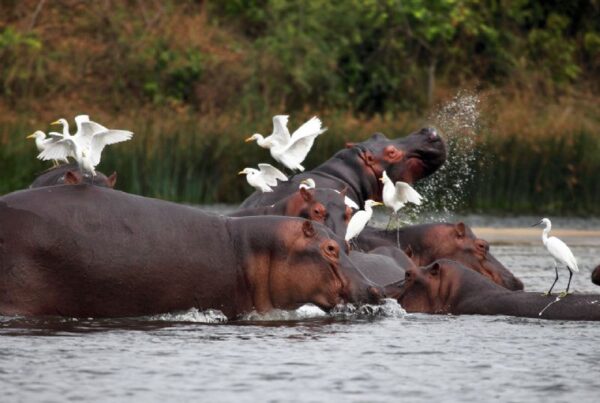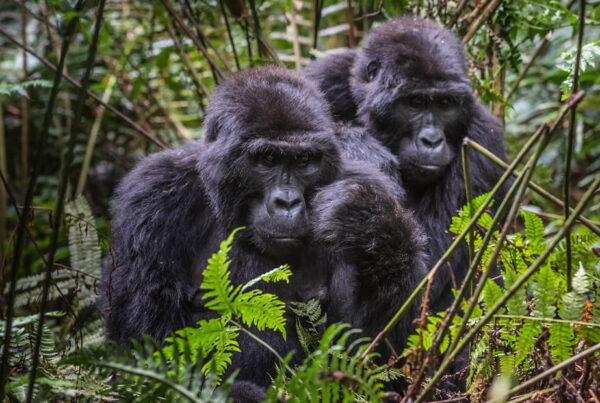Silverback Gorilla Trekking Mgahinga
A Call from the Misty Highlands
At the edge of Uganda’s southwestern frontier, where ancient volcanic peaks rise majestically and clouds weave veils of mystery across the slopes, lies Mgahinga Gorilla National Park, a sanctuary where earth and sky seem to meet in solemn embrace. Within this dramatic landscape, the extraordinary experience of silverback gorilla trekking in Mgahinga awaits—a journey that draws adventurers into the heart of one of nature’s most powerful and moving encounters.
Unlike ordinary wildlife safaris, trekking through Mgahinga is not about observation from a distance. It is about entering the silverback’s domain, following winding trails through bamboo forests, volcanic craters, and montane woodlands until, suddenly, the forest stirs with life and the towering figure of a silverback gorilla emerges. The moment is both humbling and electrifying. It is as though the wilderness itself has opened its arms to reveal its guardian and its heart.
To those who undertake this journey, the silverback is not merely a gorilla. He is a leader, a protector, and a living symbol of resilience. His presence redefines what it means to connect with the wild, blending raw power with profound gentleness. The trek becomes a rite of passage, a test of endurance and spirit, and a reminder of humanity’s place in the greater story of life.
Mgahinga Gorilla National Park: A Jewel of the Virunga Range
Nestled within the Virunga Mountain Range, Mgahinga Gorilla National Park is Uganda’s smallest national park, covering only 33.7 square kilometers. Yet what it lacks in size, it more than compensates for in grandeur and significance. Shared across the borders of Uganda, Rwanda, and the Democratic Republic of Congo, this volcanic chain forms one of the most biologically rich and visually striking landscapes in Africa.
The park’s terrain is dominated by three extinct volcanoes—Mount Muhabura, Mount Sabyinyo, and Mount Gahinga—each cloaked in lush vegetation that shifts dramatically with altitude. From lowland forests to bamboo groves, from montane woodlands to Afro-alpine zones, the diversity of habitats supports an astonishing variety of flora and fauna.
Among these natural wonders, the mountain gorilla reigns supreme. In Mgahinga, trekkers are given the rare privilege of meeting the Nyakagezi gorilla family, a group led by a formidable silverback whose leadership ensures stability and harmony within the troop. The family’s relatively stable home range within the park makes it a particularly rewarding destination for those seeking intimate encounters.
Mgahinga is not just about gorillas. It is a crossroads of nature and culture, home to the Batwa pygmies, an indigenous people whose ancestral ties to the forest stretch back centuries. To trek in Mgahinga is therefore to journey not only into the realm of gorillas but into the living heritage of Africa’s ancient highlands.
The Silverback Gorilla: Master of the Highlands
A silverback gorilla is the mature male leader of a gorilla family, distinguished by the silver-gray saddle of hair that adorns his back. Weighing up to 180 kilograms, with a broad chest, muscular arms, and a presence that dominates the forest, the silverback commands attention and respect. His role, however, goes beyond physical power.
The silverback is the family’s protector, strategist, and decision-maker. He leads his group in search of food, safeguards them from threats, and maintains social harmony within the troop. His authority is respected, but it is not absolute. It is earned through acts of care, wisdom, and responsibility.
The paradox of the silverback lies in his dual nature. He can unleash thunderous displays of dominance—beating his chest, roaring, and charging when danger looms—yet he can also be seen gently cradling infants or allowing young gorillas to climb playfully upon him. This balance of strength and tenderness is what makes the silverback not just a leader but a symbol of guardianship and resilience.
For trekkers, to stand in the presence of such a figure is profoundly moving. The gaze of a silverback is deep and unflinching, carrying a recognition that transcends species. It is a moment when the barriers of language and biology seem to fall away, replaced by a silent communion of kinship and respect.
Preparing for the Trek: Anticipation and Readiness
The journey to meet the silverback in Mgahinga begins with careful preparation. A gorilla trekking permit, regulated by the Uganda Wildlife Authority, is required. These permits are limited in number, ensuring that the gorillas are not overwhelmed by human presence and that conservation efforts are maintained at the highest standards.
On the morning of the trek, visitors gather at the park headquarters for a detailed briefing. Rangers outline the rules of conduct, emphasizing the importance of maintaining a safe distance, minimizing noise, and respecting the one-hour time limit allowed with the gorillas. Health precautions are also highlighted, as gorillas are highly susceptible to human-borne diseases.
Physical readiness is essential. The trails in Mgahinga weave through steep volcanic slopes, tangled vegetation, and at times slippery bamboo groves. Altitude adds to the challenge, with the park ranging from 2,227 to over 4,127 meters above sea level. Stamina, patience, and determination become the traveler’s true companions.
Yet the trek is not merely a physical endeavor. It is equally an emotional and spiritual preparation. The anticipation of meeting the silverback stirs excitement, while the solemnity of entering his realm evokes reverence. Each step becomes part of a pilgrimage into one of the last strongholds of the wild.
The Trekking Experience: Into the Silverback’s Domain
The trekking experience in Mgahinga unfolds like a story written by the forest itself. The first chapters are marked by the rhythm of footsteps on soft earth, the rustle of bamboo, and the chorus of birds. The forest is alive with movement and sound—the chatter of golden monkeys, the distant call of a turaco, the flutter of butterflies through shafts of sunlight.
Hours may pass in search, guided by expert trackers who follow signs of the gorillas’ recent presence: bent bamboo shoots, nests from the previous night, or fresh dung. Then, as though scripted by fate, the moment arrives. The trackers signal quietly, and the forest holds its breath.
Suddenly, the silverback emerges. His form towers above the undergrowth, his back glistening silver in the filtered light. Around him, the family moves with ease, mothers nursing infants, juveniles tumbling in playful abandon, adolescents mimicking their leader’s gestures. The scene is one of harmony, overseen by the steady authority of the silverback.
For one unforgettable hour, trekkers are absorbed into this world. The silverback may glance briefly, his eyes holding both caution and calm, acknowledging the presence of visitors without hostility. Cameras may capture images, but no photograph can truly convey the weight of that gaze, the aura of power balanced with serenity. It is a moment that lingers in memory long after the forest is left behind.
Challenges and Rewards of Mgahinga Trekking
Trekking in Mgahinga is not without challenges. The volcanic slopes can be unforgiving, the bamboo forests dense and slippery, and sudden mountain rains capable of transforming paths into rivers of mud. Fatigue, altitude, and the unpredictability of gorilla movements add to the difficulty.
Yet it is precisely these challenges that make the encounter so deeply rewarding. The effort, the endurance, and the perseverance forge a sense of achievement that amplifies the awe of standing before a silverback. The forest itself offers countless rewards along the way—sweeping vistas from volcanic ridges, encounters with rare bird species, and the haunting beauty of a landscape shaped by both fire and time.
The triumph of the trek is not only in seeing the silverback but in earning the encounter. The journey becomes part of the memory, woven into the fabric of the experience.
Conservation: Safeguarding the Future of Silverbacks
The survival of silverback gorillas in Mgahinga is a testament to the success of dedicated conservation efforts. Once pushed to the brink of extinction, mountain gorillas have seen gradual population recovery thanks to the collaboration of governments, conservation organizations, and local communities.
Revenue from trekking permits plays a crucial role. Funds support anti-poaching patrols, veterinary interventions, and habitat protection. Equally important, a portion of the revenue is shared with surrounding communities, ensuring that local people benefit directly from conservation. Schools, clinics, and infrastructure projects testify to the positive impact of gorilla tourism.
Community involvement has been transformative. The Batwa, once forest dwellers, have been integrated into tourism initiatives, offering cultural experiences and sharing their ancestral knowledge with visitors. Former poachers have become guides and porters, their livelihoods now tied to the survival of the gorillas they once threatened.
Despite these achievements, challenges remain. Population growth, habitat encroachment, and the ever-present threat of disease require constant vigilance. The silverback’s survival depends not only on conservation policy but on the continued commitment of humanity to safeguard the natural world.
Cultural and Spiritual Dimensions of Mgahinga
Gorilla trekking in Mgahinga is not only a biological encounter but also a cultural and spiritual journey. To the Batwa, gorillas embody the spirit of the forest, guardians whose presence ensures balance within nature. Traditional stories describe them as wise beings, revered for their strength and resilience.
For visitors, the encounter resonates on a profound emotional level. The silverback becomes more than a gorilla; he becomes a mirror reflecting values of leadership, family, and unity. The trek invites reflection on humanity’s relationship with nature, reminding us of our shared origins and our shared responsibilities.
The misty volcanoes, the silence of the bamboo forests, and the solemn gaze of the silverback create an atmosphere that transcends the ordinary. Many describe the experience as spiritual, a communion with the wild that stirs both reverence and humility.
Best Time to Experience Silverback Trekking in Mgahinga
Mgahinga can be visited year-round, yet the dry seasons—from June to August and from December to February—offer the most favorable conditions. Trails are more accessible during these months, though rain remains a possibility in this highland climate.
During the wetter months of March to May and September to November, trekking becomes more challenging due to muddy conditions, but the forest takes on a lush vibrancy, and the chances of solitude are higher as fewer visitors arrive.
Regardless of the season, the encounter remains unparalleled. The silverback is not bound by weather or calendar, and each trek carries its own unique rewards.
A Journey Beyond Wilderness
Silverback gorilla trekking in Mgahinga is not an ordinary adventure; it is a profound pilgrimage into the heart of the wild. It is a journey across volcanic slopes and bamboo groves, a test of endurance, and an encounter with one of the most powerful yet gentle beings on earth.
At its core lies the silverback, the guardian of the highlands, whose life embodies resilience, leadership, and unity. To meet him is to stand in the presence of nature’s grandeur distilled into a single being, to experience humility in the face of majesty, and to leave with a renewed sense of connection to the living world.
For those who dream of this extraordinary encounter, the path to Mgahinga awaits. To ensure that the journey is guided with expertise, enriched with cultural depth, and carried out with respect for conservation, it is strongly recommended to book African tours and safaris with WildHorn Africa, a trusted partner in unlocking the wonders of the continent and safeguarding the future of its majestic silverbacks.





 WildHorn Africa – Authentic and unforgettable tours across Africa, guided by local experts who know the land, wildlife, and culture best.
WildHorn Africa – Authentic and unforgettable tours across Africa, guided by local experts who know the land, wildlife, and culture best.


